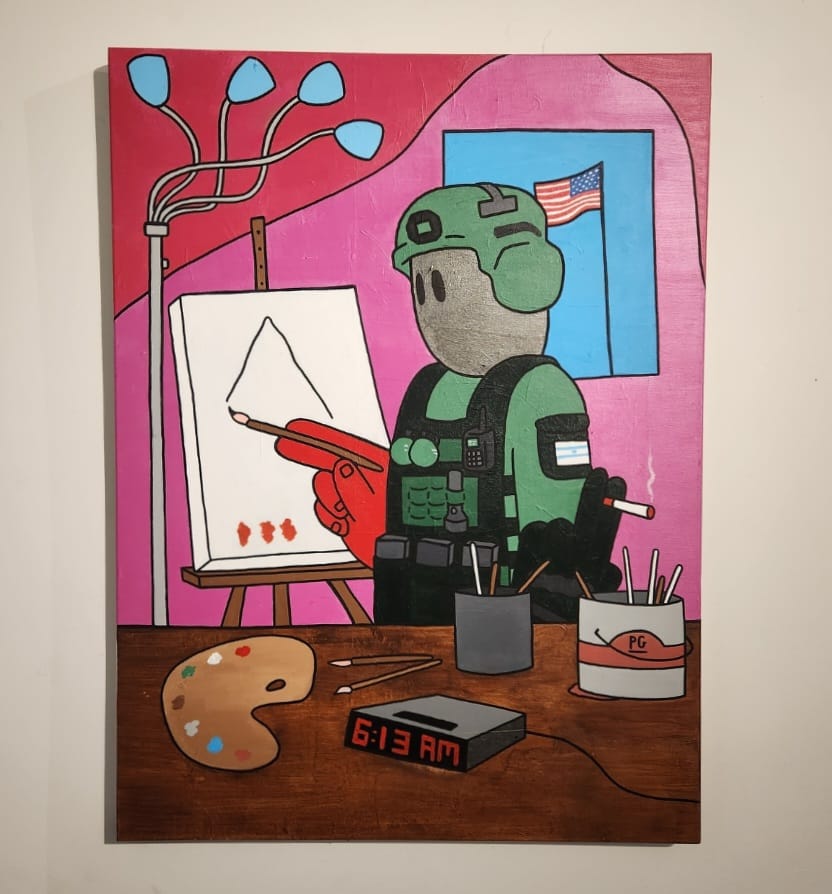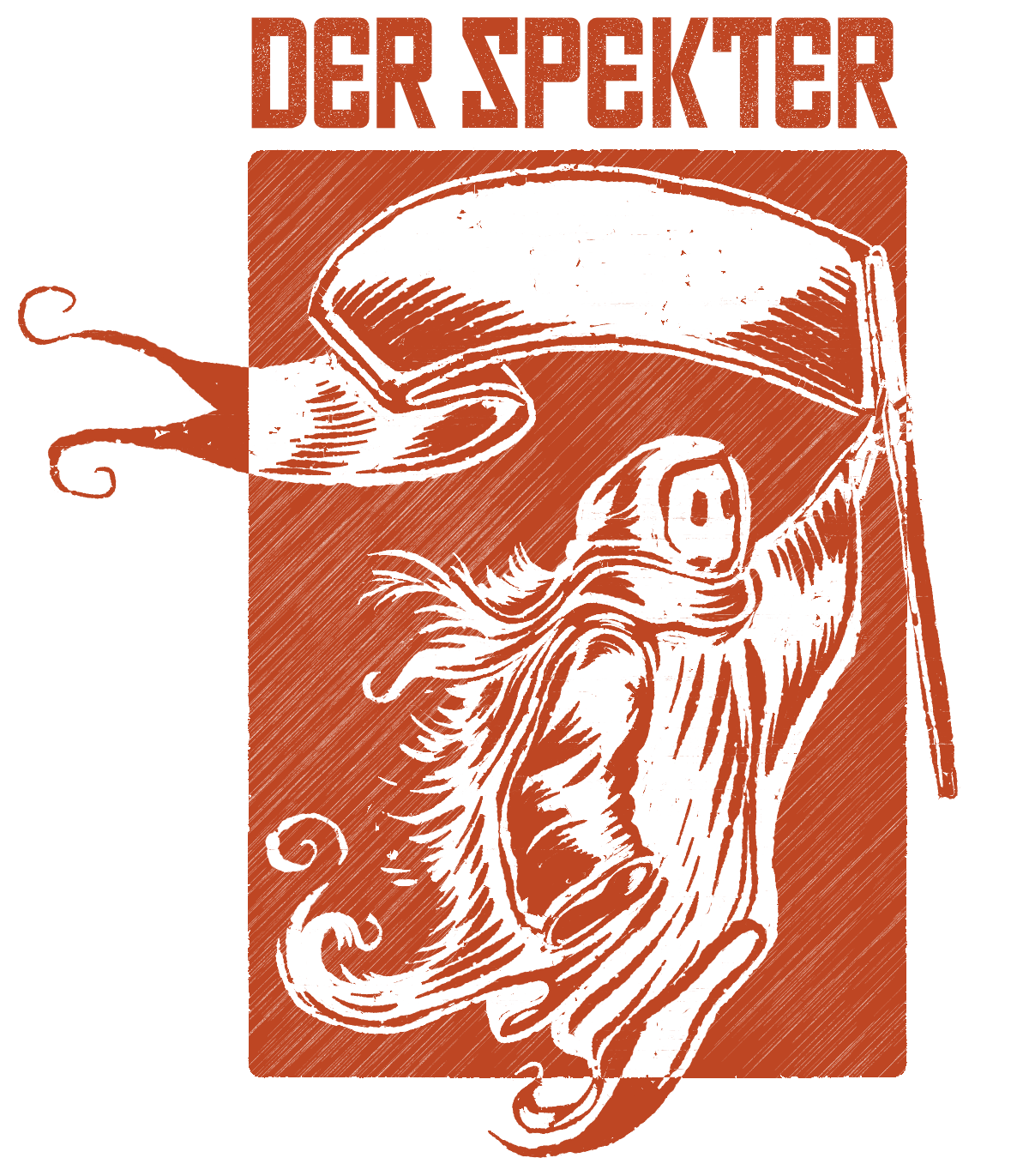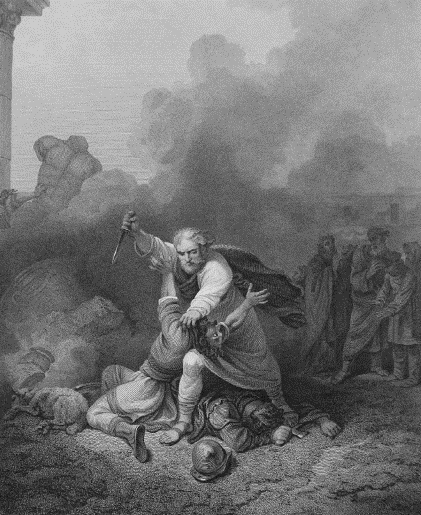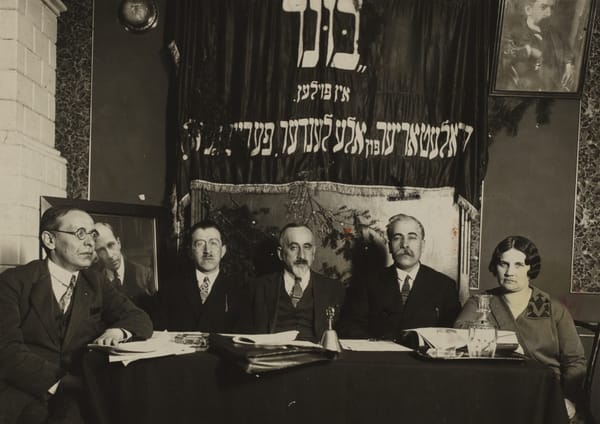The Studio
Brooklyn-based artist Ryan Fliegelman draws inspiration from Jewish artist Philip Guston.

In 1969, Philip Guston, born Philip Goldstein, displayed "The Studio." In his now famous style, Guston depicted a lone Klansman sitting in a studio puffing on a cigarette while he painted a self portrait.
The painting itself is a self portrait of the Jewish artist. Philip Guston was born to Louis and Rachel Goldstein who immigrated from Ukraine to Montreal Canada in 1913 fleeing pogroms. In 1919, the family would move to Los Angeles. California at the time was the site of regular persecution of Black and Jewish Americans by the Ku Klux Klan. Four years after the move to LA, Louis, Philip’s father, would take his own life,an act many attribute to the discrimination he faced and his inability to secure work to support his family.
Philip Goldstein, as he was still known in his early career, quickly became involved in leftist movements. At 18, a mural he made along with Reuben Kadish for the communist-affiliated John Reed Club was vandalized by anti communist Red Squads. Throughout his career he would align himself with prominent artists on the left, both American and many abroad.
If you are not familiar with Guston or his work, at this point you might wonder why he would make a piece like "The Studio" depicting himself as his own oppressor.
What Guston understood then — arguably something that many white Americans have only recently begun reckoning with — is that, in his case, his Jewishness, leftist beliefs, and whiteness were not mutually exclusive. As a Jewish man whose family was victimized by white supremacists, whose own work was destroyed by them, he still was white and benefited from the racial hierarchical structure of this country.
Guston’s piece is as relevant a commentary on the reality of whiteness in America as ever. However, it is imperative that Jews — especially white passing Jews — reckon with more than simply our relationship to whiteness, but to Zionism as well. If Zionism’s effects were "over there," on the other side of the world, that would not make it any less important to object to. But Zionism is not simply "over there." It is in our schools, synagogues, camps, charities, lobbying groups, and communities. While we struggle to challenge this ideology within our communities, we must not lose sight of our own roles in its existence. I have never stepped foot in Israel. I do not plan on ever doing so, and I am opposed to virtually everything it stands for as a nation. Despite this, just as Guston acknowledged his privilege under white supremacy, I must acknowledge my privileges both as a white and Jewish American.





